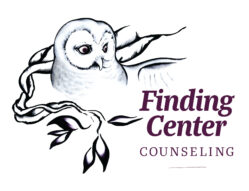The WHO originally released the International Technical Guidance on Sexuality Educationin 2009. In 2018 United Nations Educational, Scientific and Cultural Organization (UNESCO) commissioned a revision. This 139 page document is an awesome resources!
“Sexuality may thus be understood as a core dimension of being human which includes: the understanding of, and relationship to, the human body; emotional attachment and love; sex; gender; gender identity; sexual orientation; sexual intimacy; pleasure and reproduction. Sexuality is complex and includes biological, social, psychological, spiritual, religious, political, legal, historic, ethical and cultural dimensions that evolve over a lifespan.”
According to the Technical Guidance on Sexuality Education, Comprehensive Sexuality Education is:
- Scientifically accurate: based on facts and evidence
- Incremental: a continual education process throughout the school age years
- Age- and developmentally-appropriate: responsive to the changing needs and capabilities as children grow; adapts content when cognitive and emotional development is delayed
- Curriculum based: a written curriculum be utilized, including key teaching objectives
- Comprehensive: provides opportunities to acquire comprehensive, accurate, evidence-informed and age-appropriate information on sexuality
- Subjects should include, but are not limited to: sexual and reproductive anatomy and physiology, puberty and menstruation, reproduction, modern contraception, pregnancy and childbirth, STIs (including HIV and AIDS)
- Supports learner empowerment by improving their analytical, communication and other life skills for health and well-being in relation to: sexuality, human rights, a healthy and respectful family life and interpersonal relationships, personal and shared values, cultural and social norms, gender equality, non-discrimination, sexual behavior, violence and gender-based violence, consent and bodily integrity, sexual abuse and harmful practices such as child, early and forced marriages and female genital mutilation/cutting
- Based on a human rights approach: the rights of all persons to health, education, information equality and non-discrimination
- Based on gender equality: building awareness of the centrality and diversity of gender in people’s lives
- Culturally relevant and context appropriate: supporting learners as they examine, understand and challenge cultural structures, norms and behaviors
- Transformative: building the skills and attitudes that enable young people to treat others with respect, acceptance, tolerance, and empathy
- Able to develop life skills needed to support health choices: skills to reflect and make informed choices, communicate and negotiate effectively, and demonstrate assertiveness
Imagine if we all had access to this type of education from an early age!

